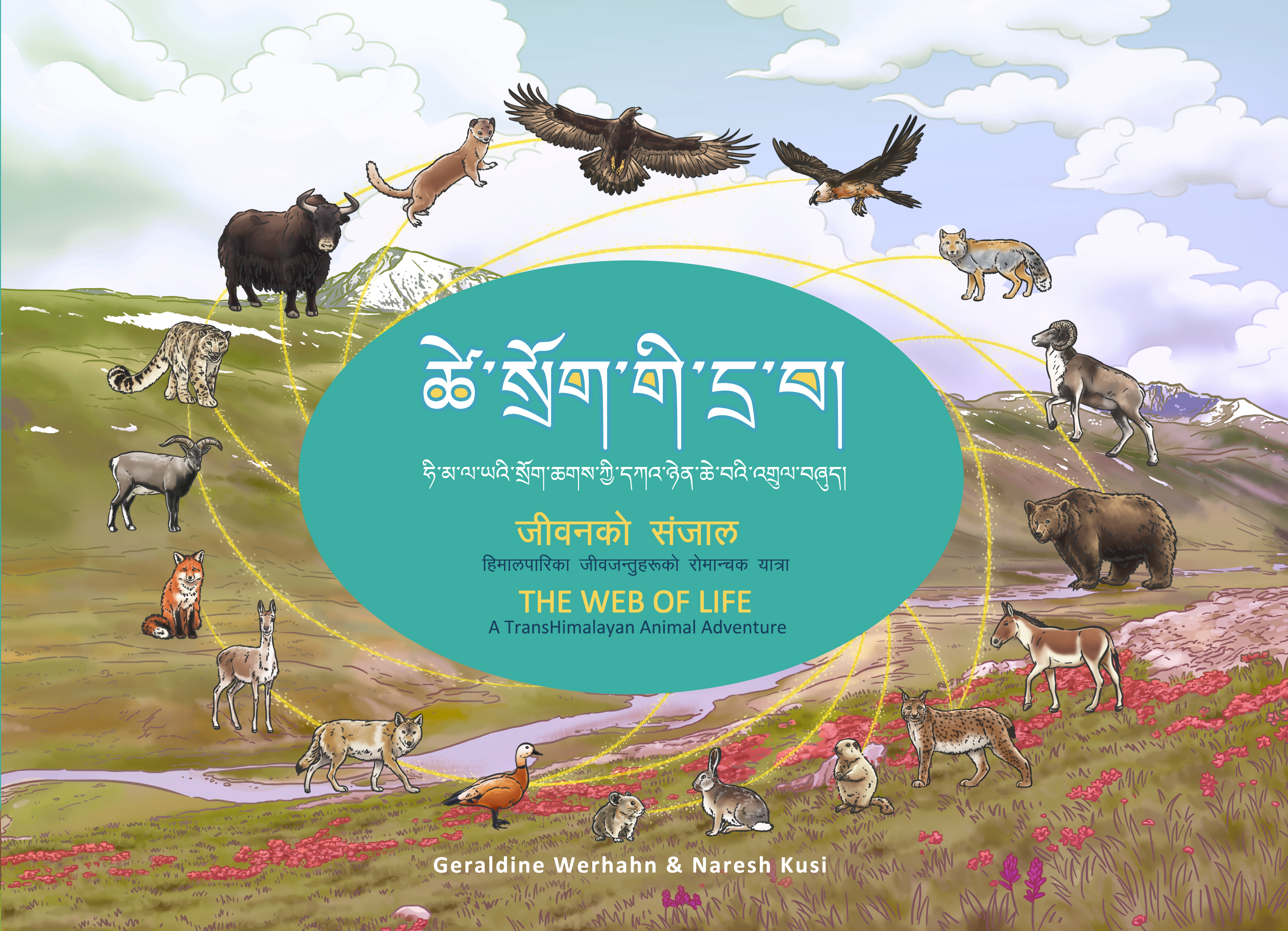News
The Web of Life: A Transhimalayan Animal Adventure
“Children are our future, so we created a book to playfully teach them about the importance of the different animal species in their Himalayan ecosystem. But really the book is for people of all ages”, explains Geraldine Werhahn, Director of the Himalayan Wolves Project.
Geraldine and her research colleague Naresh Kusi, Country Programme Director, have just released a new book titled The Web of Life: A Transhimalayan Animal Adventure which their team will distribute to remote mountain communities across the Himalayas.
The Himalayan Wolves Project has dedicated the past years studying the Himalayan wolves, which are the high-altitude wolves found in the Himalayas and the Tibetan Plateau, their prey, and the main threats to their survival. The team has spent several summer seasons in the remotest parts of the Nepalese Himalayas for their studies.
“We gathered data to inform the taxonomic classification of the Himalayan wolves as this was a critical first step to advance their conservation and to make the scientific community aware of their evolutionary uniqueness. All our work was designed to inform conservation action. We wanted to learn about the resources these wolves need to survive and thrive, and about their main threats including conflict with local human communities over livestock depredation. Very little was known about the Himalayan wolves when we started our work”, explains Geraldine. The team is now working on a new conservation project phase with the support of Foundation Segre. This project phase builds on the knowledge gathered during the previous research years and aims to bring conservation solutions to the communities and the ecosystem. “We will pilot different approaches, from providing infrastructure support to keep livestock safer from predators to operating community conservation groups and running workshops on conservation education for school children, womens groups, and livestock herders. We will also install libraries in the schools”, explains Naresh.
The team has now published their new book. It presents an animal story that is based on the teams extensive knowledge of the local culture and the wild animal species that roam in the Transhimalayan ecosystem. The story explains the ecological role of each animal species with scientific facts to an audience of all ages in a playful manner and is accompanied by beautiful illustrations. The book is written in Tibetan, Nepali, and English to reach a wider audience in the Asian high altitudes. And it aims to help the local children improve their English and Nepali language skills (most of them speak only the local Tibetan language) as the layout of the book allows a line-by-line comparison of a particular sentence/paragraph in the three languages.
The following text from the back cover of the book gives the reader a glimpse:
Join the Ruddy Shelduck family as they take their six young chicks on an adventurous journey through the wilderness of the Transhimalayas. They meet the different wondrous wild animal species with whom they share these vast lands and learn about the important roles of each of these species in the high-altitude ecosystem. This illustrated story (with text in English, Nepali, and Tibetan) describes how different animals live together in this unique ecosystem and how their coexistence ensures the survival of a wide variety of species all intimately connected through the web of life.
If you are interested in sourcing a copy of the book, please email: geraldine.werhahn@zoo.ox.ac.uk






